25+ SAMPLE Construction Project Checklist
-
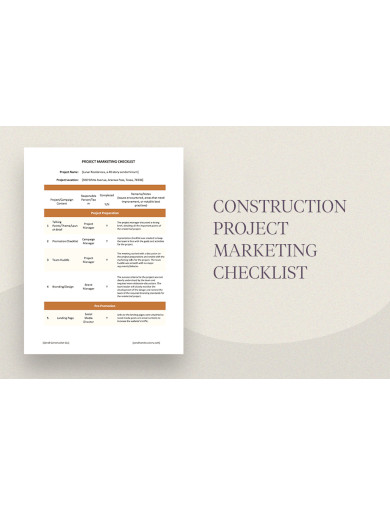
Construction Project Marketing Checklist
download now -
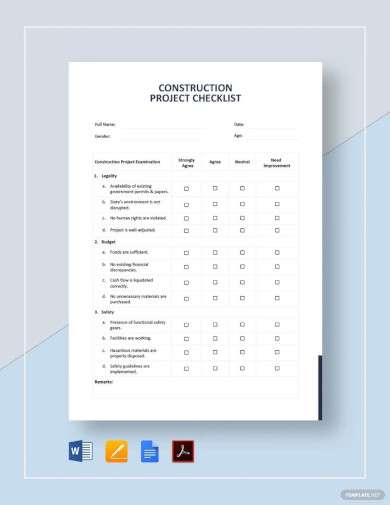
Construction Project Checklist
download now -
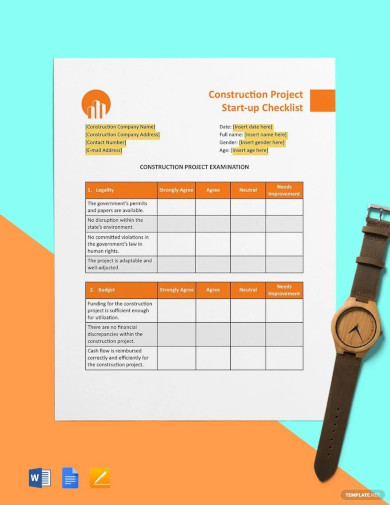
Construction Project Startup Checklist
download now -
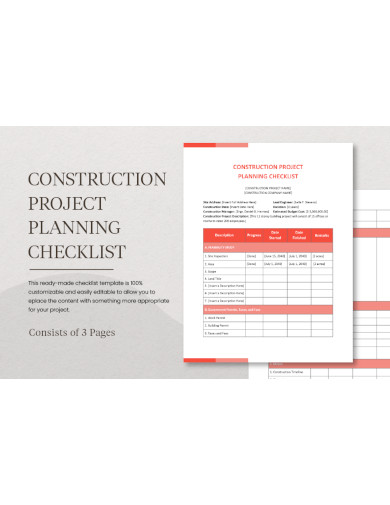
Construction Project Planning Checklist
download now -
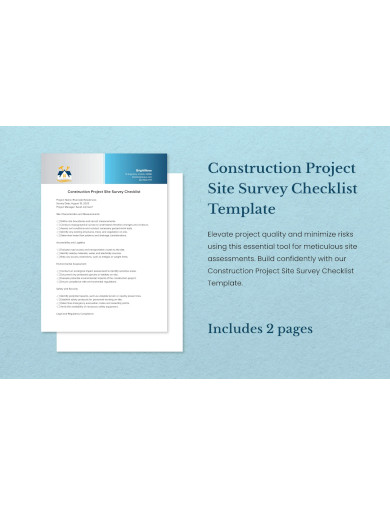
Construction Project Site Survey Checklist
download now -
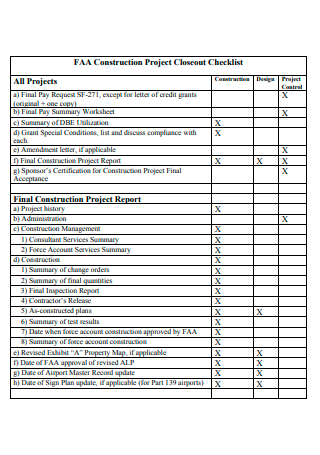
Construction Project Closeout Checklist
download now -
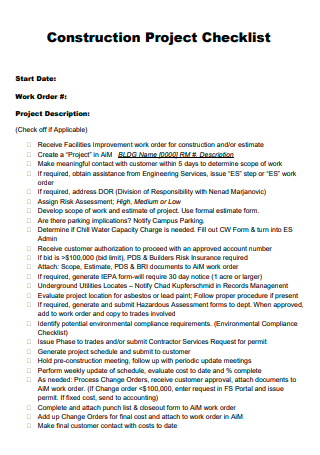
Construction Work Order Project Checklist
download now -

Project Management Construction Checklist
download now -
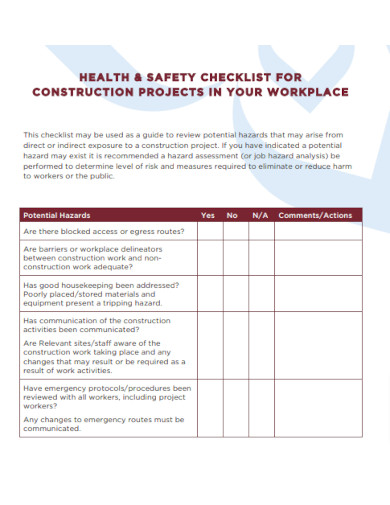
Project Construction Safety Checklist
download now -
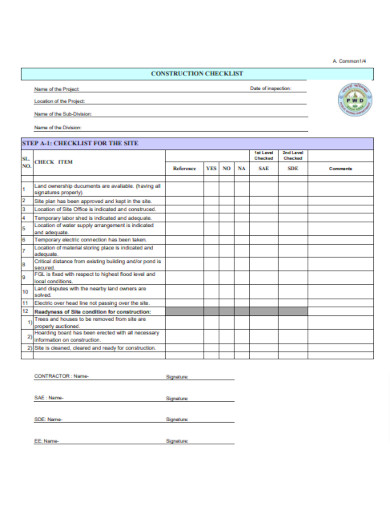
Building Construction Project Checklist
download now -
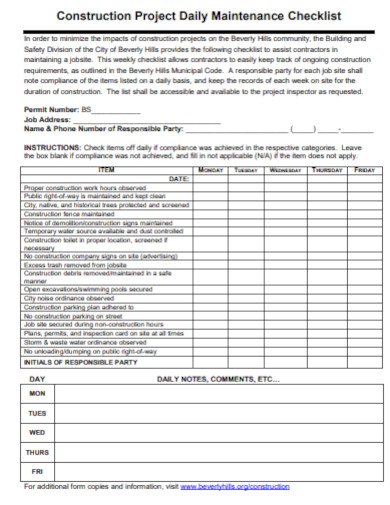
Construction Daily Project Checklist
download now -
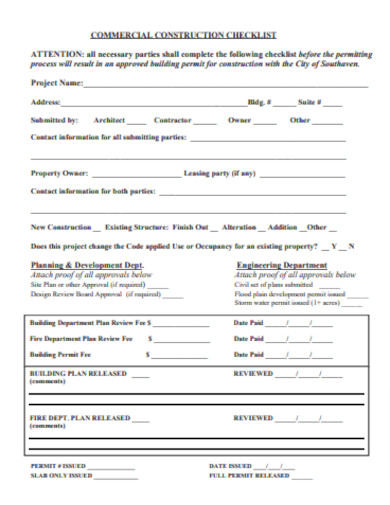
Construction Project Commercial Checklist
download now -
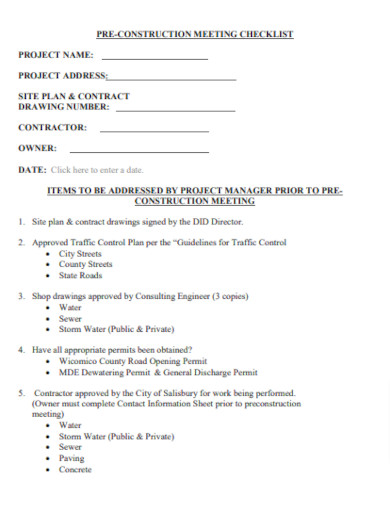
Pre-Construction Project Checklist
download now -
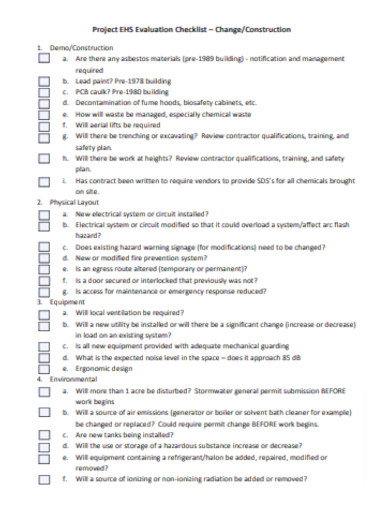
Construction Project Evaluation Checklist
download now -

Construction Project Application Checklist
download now -
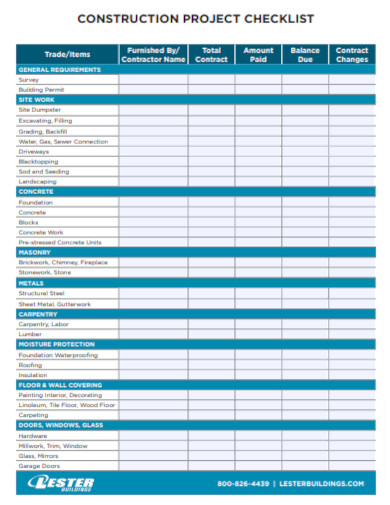
Simple Construction Project Checklist
download now -
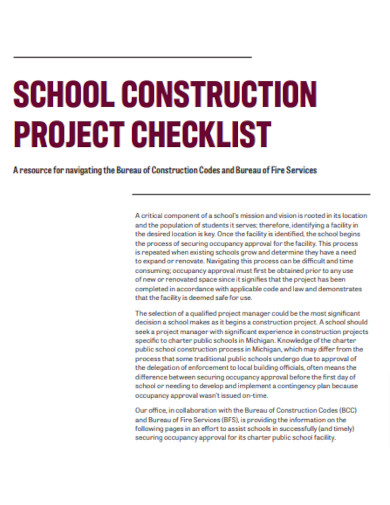
School Construction Project Checklist
download now -
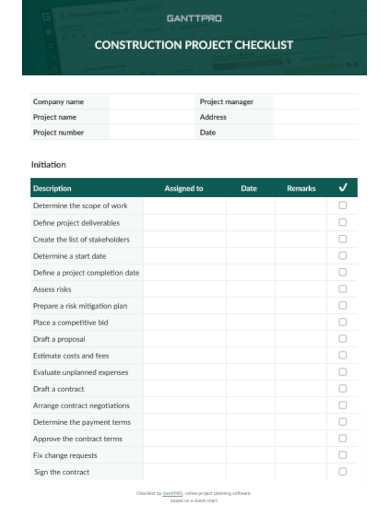
Printable Construction Project Checklist
download now -
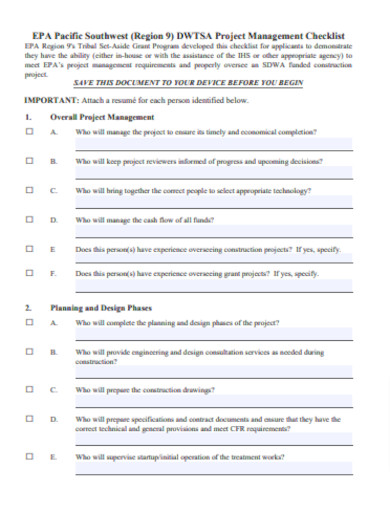
Construction Project Management Checklist
download now -
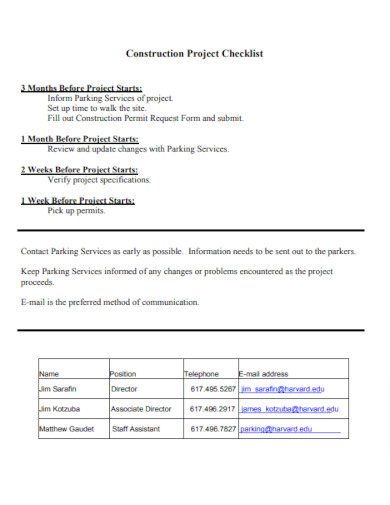
Sample Construction Project Checklist
download now -
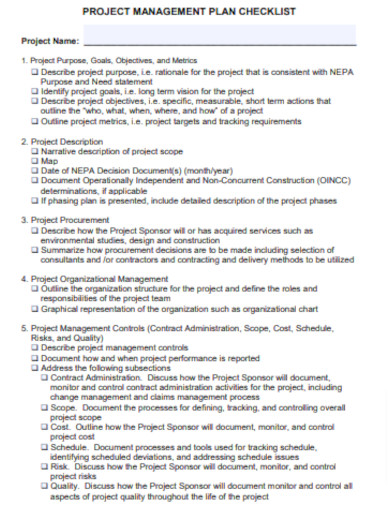
Construction Project Plan Checklist
download now -
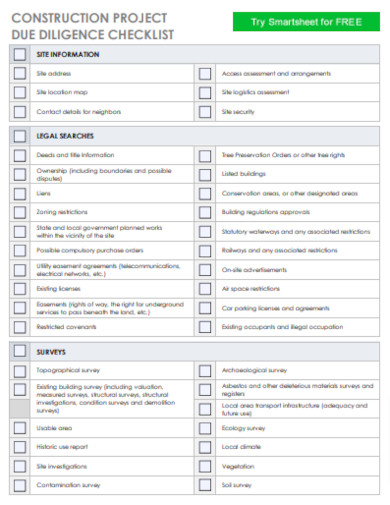
Construction Project Due Diligenc Checklist
download now -
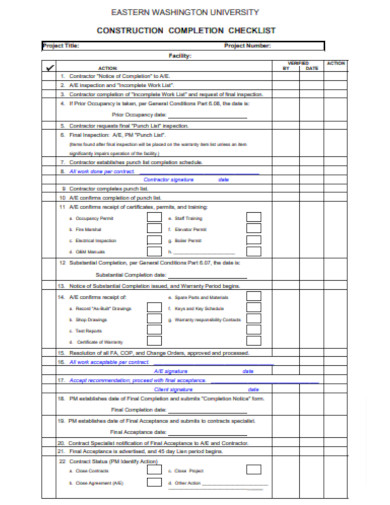
Construction Project Completion Checklist
download now -

Construction Service Project Checklist
download now -
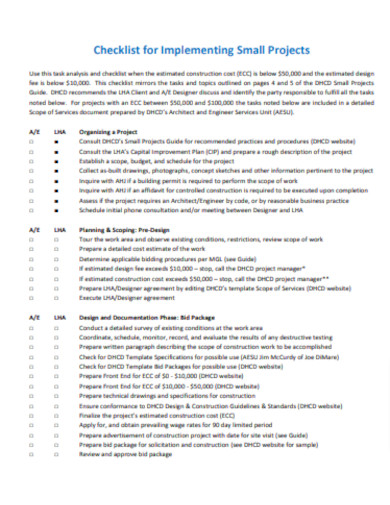
Construction Small Project Checklist
download now -
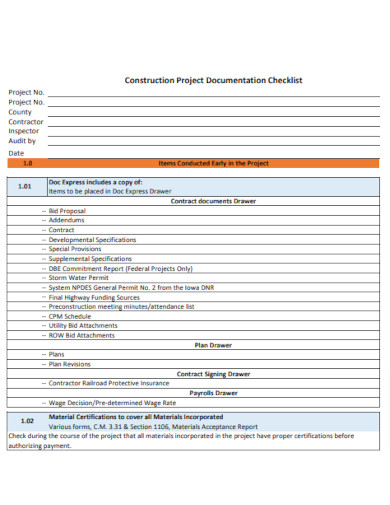
Construction Project Documentation Checklist
download now
FREE Construction Project Checklist s to Download
25+ SAMPLE Construction Project Checklist
1. Initial Planning and Pre-construction:
2. Design and Documentation:
3. Bidding and Contracting:
4. Site Preparation and Setup:
5. Construction Phase:
6. Monitoring and Communication:
7. Project Closeout:
8. Post-construction Maintenance:
9. Sustainability and Environmental Considerations:
10. Technological Integration:
11. Client and Stakeholder Relations:
Construction Project Challenges
FAQ’S
Is a post-construction review essential in a construction project checklist?
Are safety protocols part of the construction project checklist?
Does technology play a role in modern construction checklists?
How does a checklist cater to unforeseen challenges or issues?
Who should be involved in creating and maintaining the construction project checklist?
The foundation of a successful construction project lies in meticulous preparation. The importance of preparation in construction cannot be emphasized enough, as it sets the trajectory for the entire project.
1. Initial Planning and Pre-construction:
a. Project Vision and Goals:
Defining the purpose and expected outcomes provides a blueprint for the entire project. Having a clear direction minimizes confusion and helps all stakeholders align their actions with the overarching objectives. Regular meetings to revisit these goals ensure the project remains on track.
b. Budget Planning:
A budget isn’t just a financial restriction—it’s a strategic tool. It’s crucial to account for every potential expense, from the glaringly obvious to the minutely hidden. Regular reviews and updates can prevent unforeseen costs from derailing the project later on.
c. Preliminary Design and Feasibility Study:
Early engagement with professionals, like architects and engineers, can preempt potential design hitches. Feasibility studies, while sometimes overlooked, can provide invaluable insights into the project’s potential challenges and returns, both in terms of finance and functionality.
d. Site Analysis:
Every construction site has its quirks. Understanding the soil type, water table level, surrounding infrastructure, and other peculiarities can influence design decisions, equipment choices, and construction methodologies.
2. Design and Documentation:
a. Finalize Design:
While designs evolve, there should be a stage where the blueprint is finalized to form the basis of construction. This step also ensures that the project adheres to all local and international building standards, preventing legal complications.
b. Material Selection:
The balance between cost, quality, and aesthetics can be a tightrope walk. Regular discussions with suppliers, staying updated with new material technologies, and sometimes even visiting manufacturing facilities can make this selection more informed.
c. Obtain Necessary Permits:
Each region has its bureaucracy and regulations. It’s essential to be proactive and ensure all necessary permissions are in place before commencement to prevent halts and potential legal ramifications.
3. Bidding and Contracting:
a. Contractor Selection:
Beyond just the monetary bid, a contractor’s experience, past projects, team strength, and even feedback from previous clients should influence the decision.
b. Contract Drafting:
A well-drafted contract protects both parties. It should be exhaustive, detailing every aspect, including payment milestones, quality expectations, penalties for delays, and mechanisms for conflict resolution.
4. Site Preparation and Setup:
a. Site Survey:
Modern techniques, like drone mapping and 3D topographical studies, offer more precise insights, ensuring the project begins on the right foot.
b. Site Clearing:
It’s not just about removing obstructions; it’s about ensuring the cleared materials are disposed of responsibly, considering environmental guidelines.
c. Site Setup:
Setting up a construction site goes beyond just the machinery. Consideration for worker amenities, like resting areas, sanitation facilities, and even medical provisions, can enhance productivity and morale.
5. Construction Phase:
a. Material Procurement:
Timely delivery can prevent project stalls. Implementing inventory management systems and having a dedicated procurement team can streamline this process.
b. Workforce Management:
Beyond just task allocation, considering worker health, rotation to prevent fatigue, and continuous training sessions can maintain high standards of work quality.
c. Quality Control:
Quality doesn’t happen by accident. Periodic and surprise checks, third-party inspections, and using technologies like sensors and IoT can uphold standards.
d. Safety Protocols:
Every construction site is riddled with potential hazards. Regular safety audits, emergency drills, and fostering a safety-first culture are non-negotiable.
6. Monitoring and Communication:
a. Progress Tracking:
Project management software can provide real-time updates, allowing quick interventions when deviations occur.
b. Stakeholder Communication:
Transparent communication minimizes misunderstandings and misaligned expectations. Regular updates, whether through formal reports or meetings, ensure everyone is on the same page.
7. Project Closeout:
a. Final Inspection and Quality Assurance:
A project’s success isn’t just about completion—it’s about ensuring that what’s delivered matches what was promised. External quality audits can offer unbiased assessments.
b. Handover Documentation:
From equipment manuals to maintenance schedules, providing a comprehensive document set can smooth the transition to the project’s next phase or its end users.
c. Final Payments and Settling Accounts:
Clearing financial obligations punctually is not just about maintaining relationships; it’s also about upholding the organization’s reputation.
d. Post-construction Review:
Reflection is the cornerstone of growth. Understanding what went right, what went wrong, and areas of improvement ensures future projects benefit from past experiences.
8. Post-construction Maintenance:
a. Facility Management Setup:
For projects that mandate it, establishing a robust management system ensures the project’s longevity and functionality.
b. Warranty and Repair:
Understanding the guarantees provided by contractors and suppliers, and ensuring there’s a clear channel for addressing post-construction issues, offers peace of mind to end-users.
9. Sustainability and Environmental Considerations:
a. Sustainable Material Choices:
Utilizing materials that are eco-friendly or have a reduced carbon footprint not only helps in promoting sustainable development but also often proves cost-effective in the long run.
b. Energy Efficiency:
From the machinery used on-site to the design considerations for the completed structure, energy efficiency can play a pivotal role. Consider incorporating passive solar designs, efficient insulation, and energy-saving appliances.
c. Water Management:
Implement systems to reduce water waste. This can range from water-efficient fixtures in the completed building to strategies for minimizing water use during the construction phase.
d. Waste Management:
Develop a system to manage waste effectively. This includes recycling where possible, proper disposal of hazardous materials, and minimizing landfills.
10. Technological Integration:
a. Construction Technology:
Adopting the latest construction techniques and machinery can speed up the process and reduce costs. Technologies like Building Information Modelling (BIM) can streamline the design and construction processes.
b. Digital Communication:
Leverage digital platforms to enhance communication among team members. Apps and platforms specifically designed for construction project management can be especially beneficial.
c. Advanced Safety Measures:
Utilize technology to improve site safety, from drones for site inspections to wearable tech that monitors workers’ vitals and ensures they aren’t overexerting themselves.
d. Future-proofing the Construction:
Consider the long-term technological needs of the building or structure. This might include built-in network infrastructure, smart home integrations, or provisions for renewable energy installations.
11. Client and Stakeholder Relations:
a. Regular Check-ins:
Beyond just formal updates, informal check-ins can foster stronger relationships and ensure that the client feels involved and valued.
b. Feedback Mechanisms:
Encourage stakeholders to provide feedback throughout the project. This can lead to immediate course corrections if required and helps in aligning expectations.
c. Celebrate Milestones:
Marking significant milestones, be it a phase completion or the installation of a significant component, can boost team morale and showcase progress to stakeholders.
d. Post-project Engagement:
The end of the project doesn’t mean the end of the relationship. Periodic check-ins, especially in the initial months post-completion, can provide insights into any issues and offer opportunities for future collaborations.
Construction Project Challenges
The construction industry, a colossal behemoth representing a significant portion of the global economy, is renowned for its complexity. While the end result—a new infrastructure, a residential complex, or a revamped public space—might seem straightforward, the journey from blueprint to finished product is rife with challenges. Let’s explore some of the most common obstacles faced during construction projects and consider potential solutions.
1. Financial Constraints:
a. Budget Overruns: Unexpected costs can quickly accumulate, leading to budgetary constraints. These overruns might be due to unforeseen site conditions, changes in material prices, or design modifications.
b. Cash Flow Issues: Delayed payments, either from clients or financiers, can stall construction processes, affecting the entire project timeline.
Solution: Implement rigorous budgeting processes, have contingency plans, and maintain transparent communication with stakeholders about financial needs and constraints.
2. Regulatory and Compliance Issues:
a. Permit Delays: Obtaining the necessary construction permits can be time-consuming, especially in regions with stringent regulations.
b. Changing Building Codes: Construction codes can evolve, and projects need to adapt swiftly to remain compliant.
Solution: Engage regulatory consultants early in the planning phase, and frequently review local regulations to remain updated.
3. Environmental Challenges:
a. Unpredictable Weather: Weather conditions, such as excessive rain, extreme temperatures, or storms, can halt construction activities.
b. Environmental Restrictions: Projects might face restrictions due to ecological concerns, like protecting endangered species or ecosystems.
Solution: Incorporate flexible timelines accounting for potential environmental delays and engage in thorough environmental impact assessments during the planning phase.
4. Labor and Workforce Challenges:
a. Skill Shortages: The construction industry often grapples with a dearth of skilled labor, leading to reduced productivity and potential quality issues.
b. Safety Concerns: Construction sites are inherently hazardous, and accidents can result in project delays and legal complications.
Solution: Invest in training programs, prioritize safety protocols, and maintain a positive work environment to retain talent.
5. Technical and Design Issues:
a. Inaccurate Initial Surveys: Mistakes during the site survey phase can lead to significant design and construction challenges later on.
b. Design Modifications: Frequent changes in design can disrupt the construction timeline and budget.
Solution: Utilize advanced surveying tools, maintain open communication with architects and designers, and ensure stakeholders finalize designs before construction commencement.
6. Material Management:
a. Supply Chain Disruptions: Delays in material deliveries, often due to external factors, can stall construction processes.
b. Material Quality Issues: Subpar materials can jeopardize the project’s integrity and lifespan.
Solution: Develop relationships with reliable suppliers, maintain a buffer stock of critical materials, and implement rigorous quality checks.
7. Stakeholder Miscommunication:
a. Misaligned Expectations: Discrepancies between client expectations and on-ground realities can result in dissatisfaction and disputes.
b. Lack of Transparent Communication: Without regular updates, stakeholders might feel disconnected from the project.
Solution: Adopt collaborative project management tools, hold regular update meetings, and ensure that every change or challenge is communicated promptly.
8. Technological Integration:
a. Resistance to New Technologies: Reluctance to adopt newer construction technologies can hinder efficiency and quality.
b. Integration Challenges: Merging new tech solutions with existing processes can be complex.
Solution: Invest in training sessions, gradually integrate technology, and highlight the long-term benefits of technological adoption.
FAQ’S
Is a post-construction review essential in a construction project checklist?
A post-construction review is vital. It offers insights into the project’s successes and areas of improvement, ensuring that lessons learned can be implemented in future projects.
Are safety protocols part of the construction project checklist?
Safety should be a paramount concern in any construction checklist. This includes regular safety audits, emergency drills, and adherence to local and international safety standards and regulations.
Does technology play a role in modern construction checklists?
Absolutely. With the rise of digital project management tools and construction-specific software, many checklists have transitioned from paper-based documents to dynamic digital platforms that allow real-time updates, collaboration, and monitoring.
How does a checklist cater to unforeseen challenges or issues?
While a checklist aims to consider and plan for every task and challenge, unpredictability is part of construction projects. It’s essential to have contingency plans embedded within the checklist and maintain flexibility to adapt to unforeseen circumstances.
Who should be involved in creating and maintaining the construction project checklist?
The checklist’s creation should be a collaborative effort involving project managers, architects, engineers, contractors, and key stakeholders. This ensures a comprehensive overview, catering to all project facets.
A construction project’s success hinges on a myriad of factors, from meticulous planning to stakeholder management. In today’s dynamic world, where technology, sustainability, and rapid communication play pivotal roles, the traditional project checklist has evolved to encompass these nuances. By considering and acting on each of these detailed points, construction professionals can navigate the complexities of their projects with confidence, ensuring that the final product stands as a testament to their expertise and dedication.
